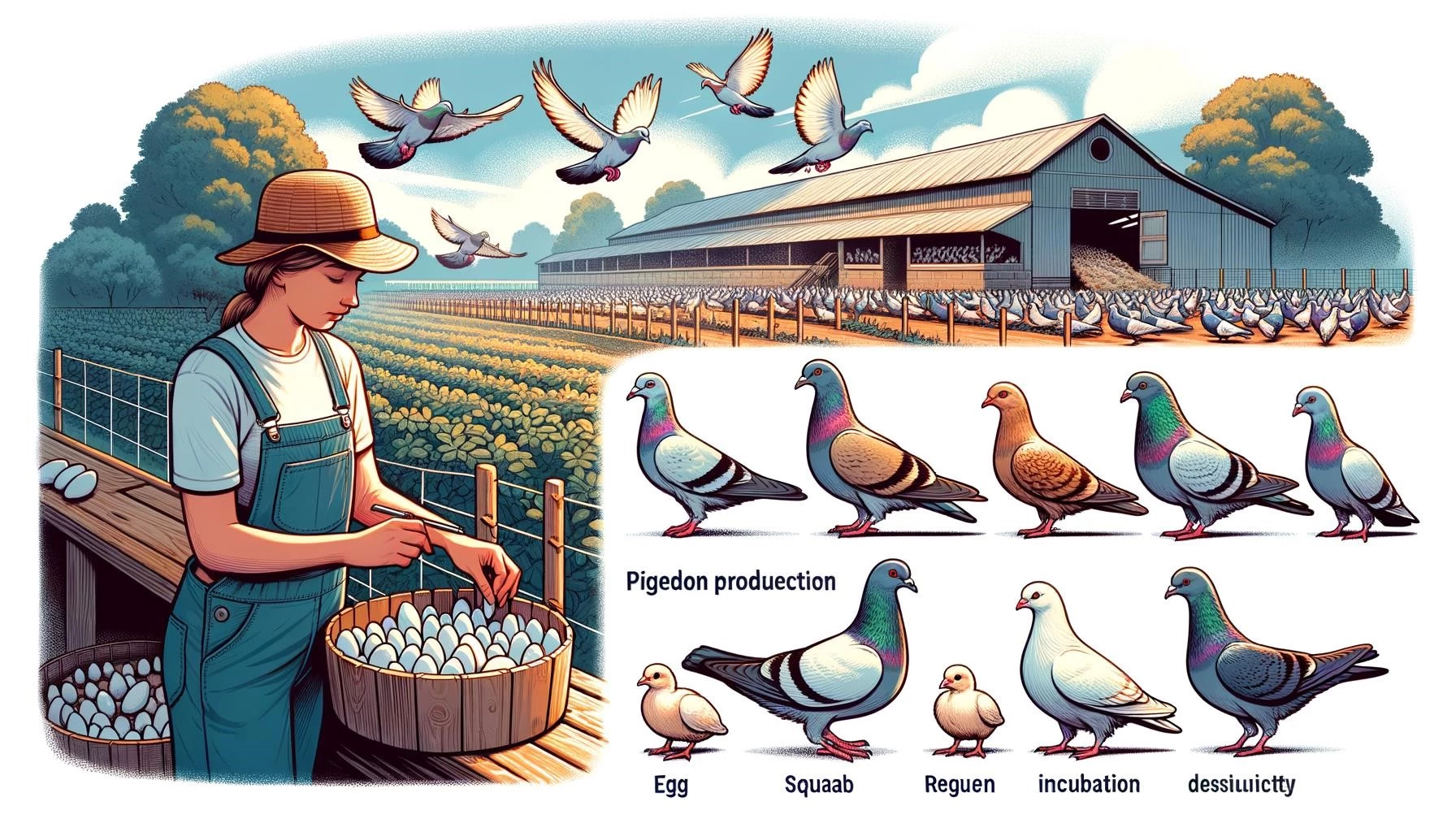Utility pigeons, also known as working birds, are domesticated pigeons that have been bred specifically for meat production. They are raised to produce young pigeons called squabs, which are a delicacy in many countries. Utility pigeons are capable of producing a sufficient number of squabs that are of suitable weight and quality for consumption.
Key Takeaways
- Utility pigeons are domesticated pigeons bred for meat production.
- Squabs are young pigeons that are 26-30 days old and are considered a delicacy.
- Utility pigeons are bred to breed and grow quickly for efficient meat production.
1. Utility Pigeon Breeds and Characteristics
Utility pigeons are bred to have specific traits that are valuable for practical purposes, rather than conforming to show standards. They are selected for their ability to reproduce rapidly, grow quickly, and produce high-quality squabs. Some common utility pigeon breeds include white king, red Carneau, French Mondain, and giant homers.
These pigeons are typically larger in size compared to show pigeons and have higher meat yield. They are hardy birds that can adapt to various environments and are known for their maternal instincts and ability to care for their young.
2. Squab Production and Management
Squabs are considered a niche product and are often found in high-end restaurants and gourmet markets. They are harvested when they are around 26-30 days old, before they start to fly. At this age, their meat is tender and flavorful.
Utility pigeons can be bred in small spaces, making them suitable for backyard farming. A breeding pair of pigeons can produce around 12-16 squabs in a year. They are typically fed a diet of grains such as wheat, sorghum, and corn.
It is important to provide proper housing, sanitation, and nutrition to ensure the health and well-being of the pigeons. Regular monitoring and management are necessary to maintain a productive squab production system.
3. Benefits and Challenges of Utility Pigeon Farming
Utility pigeon farming offers several benefits, such as a low space requirement, low cost compared to chicken farming, and a relatively short production cycle. Pigeons are also known for their efficient feed conversion, making them a sustainable choice for meat production.
However, there are also challenges associated with utility pigeon farming. Disease management, predator control, and maintaining proper hygiene are important considerations. Additionally, market demand for squabs may vary, making it necessary for farmers to identify potential buyers or establish dedicated distribution channels.
Overall, utility pigeon farming can be a viable option for small-scale farmers or backyard enthusiasts seeking to produce a unique and high-quality meat product. With proper care and management, utility pigeons can provide a sustainable source of meat that is appreciated by consumers seeking alternative and niche food options.









